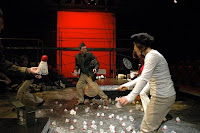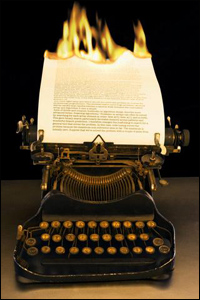Tomorrow begins the first day for all those adventurous souls who have always thought, "I've always wanted to write a play in only 30 days!"
As a participant last year, as well as a guest blogger (Follow Your Digressions), I can speak from experience that its not the easiest task, but it can be done. You just have to make an effort to write every day (yes, every day, but we've already talked about that many times in this blog). Set a schedule of a couple of pages a day, or a scene a day, and get to work!
(By the way, a great book despite its awful title is How to Write a Movie in 21 Days
by Viki King--although its for screenplays, it is really helpful for structuring a story and giving you a schedule of what to work on and when.)
One thing to remember is that it's not called National Write a Brilliant Play Month. Although, I must say, some of the best plays have been written in only a few weeks or a few days (at least according to Albee or Shepard or McDonagh, but can we really trust that?). Who's to say you won't write something brilliant, that the pressure of finishing so quickly won't bypass your Inner Critic and let the true artist inside pour out onto the page? It can happen.
So go forth and write a play you suckers for literary masochism!
(And for those of you who are bothered by so much white space on the page and want to write a novel, go to the NaNoWriMo site and check that out).
On a side note, I have put the solo show on the backburner for now as I develop a new project, which sadly, due to its element of research on robotics and its necessary element of collaboration with live actors and live puppets, will most likely not be able to be completed in a month.
And I also have a short screenplay I want to work on, as well.
(Call it a poor excuse if you like for non-invovlement, but it works for me.)





